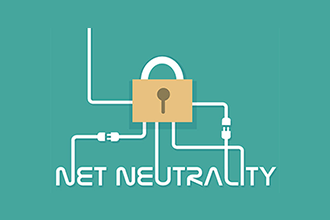Many virtual barrels of ink have spilled on the topic of “net neutrality” over the last two years and no issue has generated more intense scrutiny and public interest with the Federal Communications Commission (FCC) since it published its proposed rule titled, “Restoring Internet Freedom” on June 2, 2017. An unprecedented 23 million comments were filed, with a clear majority opposing the FCC intention to reverse the current rules back to pre-2015, “light touch” regulations. Many virtual barrels of ink have spilled on the topic of “net neutrality” over the last two years and no issue has generated more intense scrutiny and public interest with the Federal Communications Commission (FCC) since it published its proposed rule titled, “Restoring Internet Freedom” on June 2, 2017.
An unprecedented 23 million comments were filed, with a clear majority opposing the FCC intention to reverse the current rules back to pre-2015, “light touch” regulations.
So, why is there so much opposition to reversing rules that are only two years old with pundits predicting “the end” of an open and free internet? That is a question I found myself asking many times when reading numerous op-eds and news stories that promise widespread chaos when the FCC reverts to a regulatory framework that existed for decades prior to 2015.
I won’t spend much time going through the pro and con arguments for the ruling other than to say one side supports rules promulgated in 2015 that place broadband internet access services (BIAS) under the same regulatory structure that governs telephone companies — a basic structure that was created during the Roosevelt administration (Title II of the Communications Act of 1934).
They argue that strict regulation prohibiting blocking, throttling and paid prioritization of bandwidth is necessary for startup companies to have a chance to thrive and for consumers to have affordable and open access to legal content on the internet. On the other side, BIAS providers like AT&T, Verizon, Comcast and many of the more than 4,000 smaller internet service providers (ISP) say that actual innovation and internet growth to underserved regions is thwarted with the ‘heavy handed’ regulatory scheme of Title II.
They cite as evidence, the unprecedented growth that occurred when BIAS was treated under Title I as an information service by every presidential administration since the passage of the Telecommunications Act of 1996 until the “Title II Order” in 2015.
While there are legitimate concerns about the lack of competition in some markets with ISPs, I don’t think that the sort of calamities predicted by opponents of the “Restoring Internet Freedom” ruling will befall “western civilization” when the FCC returns BIAS to an information service and restores a “light touch” approach to regulation.
With that said, there is a very strong interest in the electronic security and life safety industry to maintain current protections that exist in the Telecommunications Act that;
1) prohibit telecommunication companies from engaging in anti-competitive practices,
2) prohibit datamining customer information, and
3) provide expedited review on alleged violations.
These protections provided to the electronic security industry are specifically laid out in Section 275 of the Telecommunications Act and they will remain in effect after the FCC ruling to return BIAS as an information service. This is an important fact that is often overlooked, because the FCC could have chosen to forbear (basically ignore enforcement of) Section 275, which could have presented very real concerns for this industry.
While the FCC is removing the call blocking, throttling and paid prioritization prohibitions, it will enhance transparency requirements. This is the thrust of the current FCC intent, with the goal being a return to innovation and market-based solutions.
Only time will tell if the trajectory of innovation and market growth that existed from 1996 to 2015 returns after the FCC ruling, or if the pundits that fear the “end of the internet” are proven correct. I do believe the market economy will continue to work given the regulatory framework to do so.
What remains a concern for our industry is lack of access to quality BIAS in conjunction with copper retirement while many legacy alarm systems remain dependent on that mode of connectivity. While everyone is rightly concerned with internet access, speed and cost, it is foundational to this industry that consumers have some form of reliable communication pathway for their security and life safety systems.
This will continue to be our focus as we work with groups such as the Alarm Industry Communications Committee (AICC) to keep the protections the industry has and ensure communication pathways remain reliable and available for all consumers.




